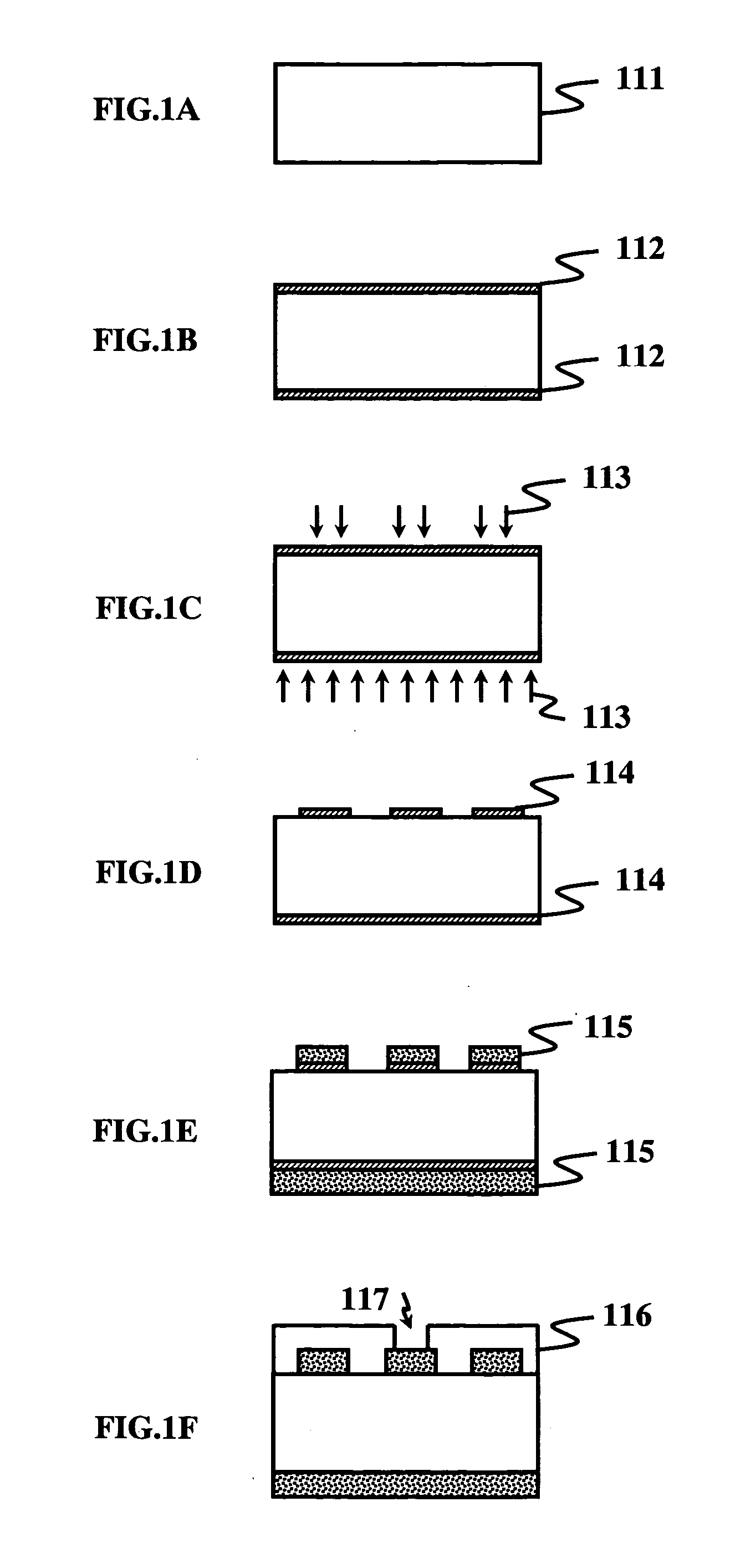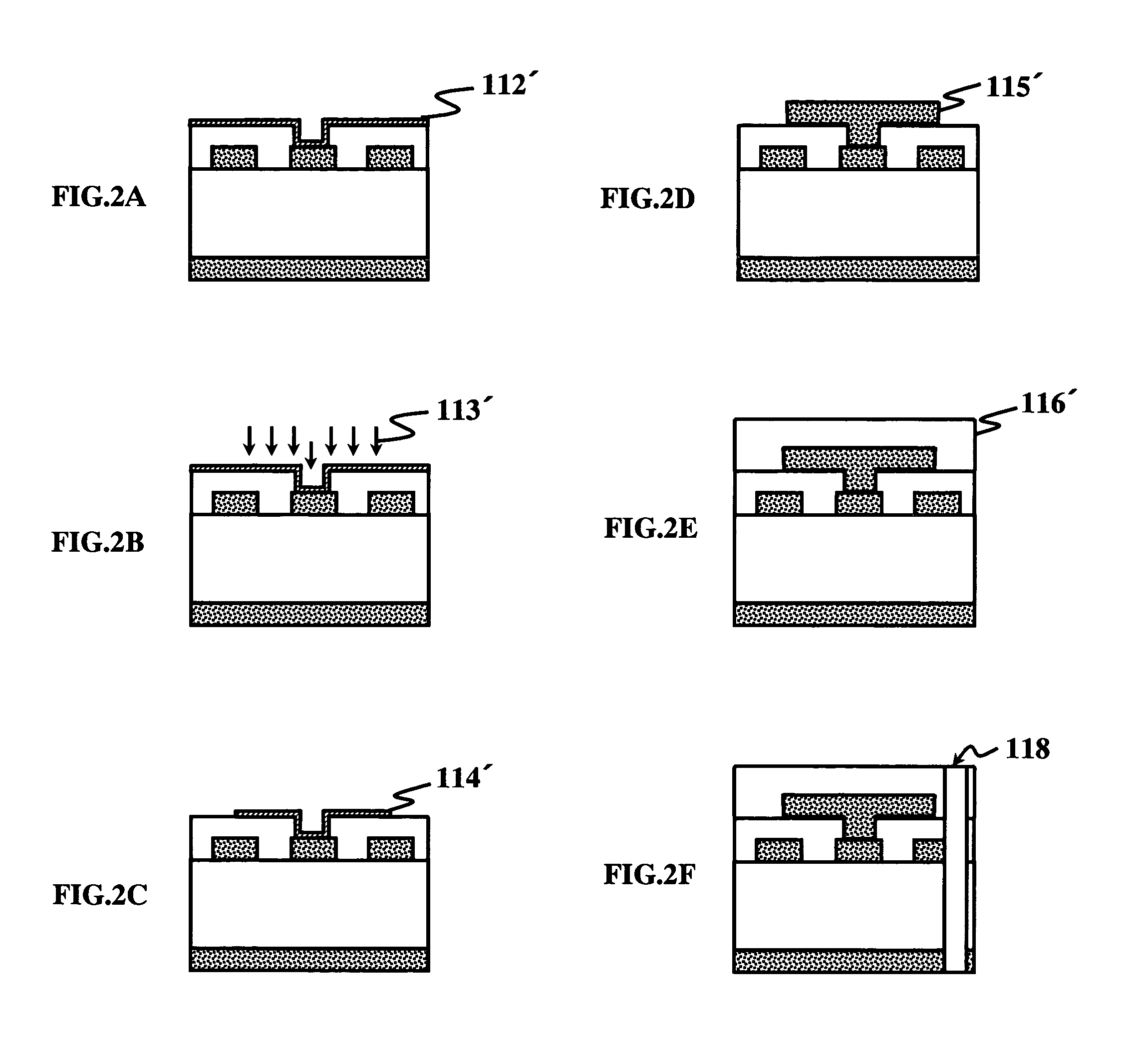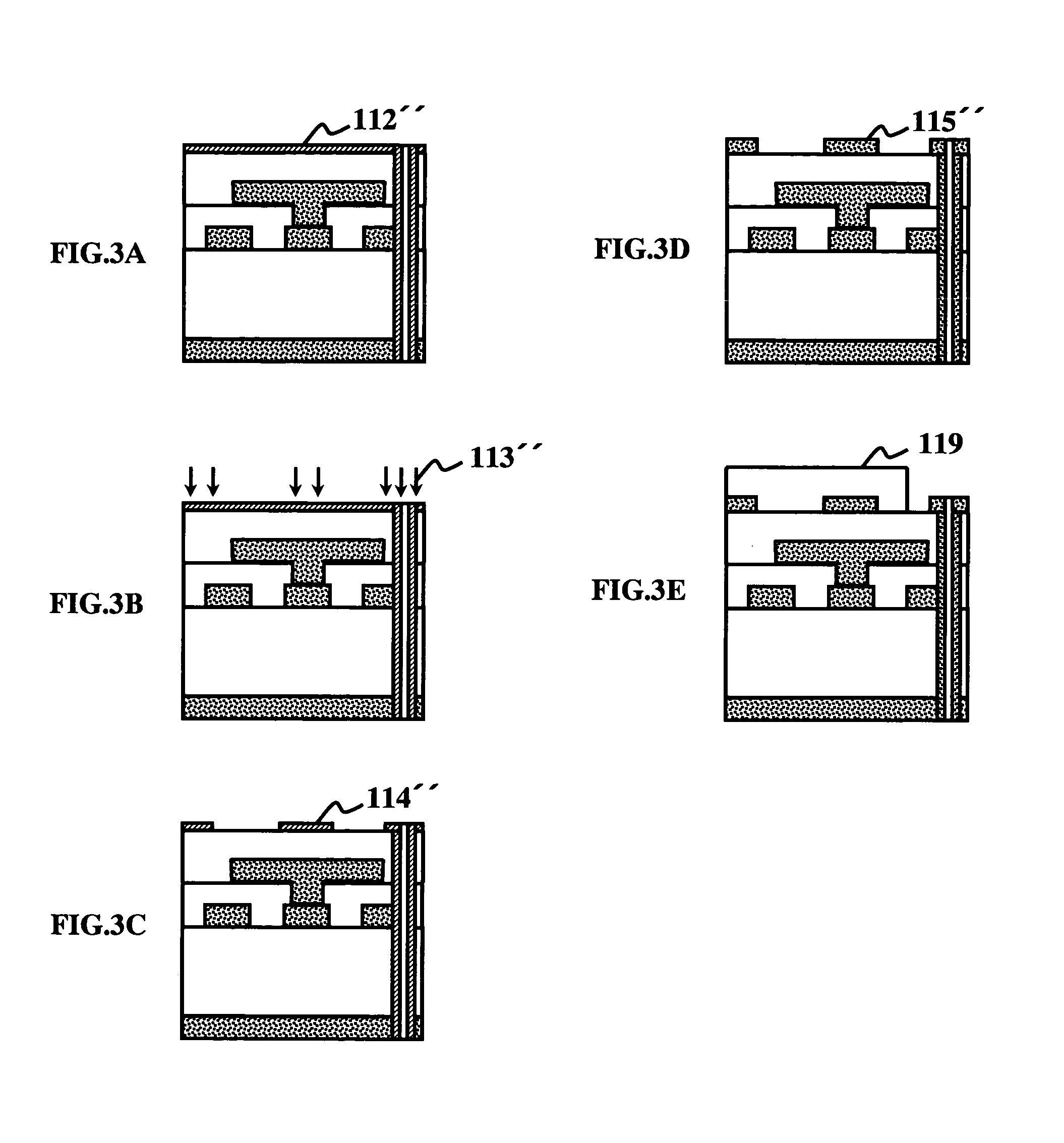Methods for forming and patterning of metallic films
a technology of metallic film and patterning, which is applied in the direction of thermoplastic polymer dielectrics, printing, spray discharge apparatus, etc., can solve the problems of insufficient adhesion of metal pattern to substrate, easy to come off, and complicated fabrication process, etc., to achieve simplification of manufacturing process, sufficient adhesion, and the effect of good adhesion
- Summary
- Abstract
- Description
- Claims
- Application Information
AI Technical Summary
Benefits of technology
Problems solved by technology
Method used
Image
Examples
embodiment 1
[0094]FIGS. 1A to 1F, FIGS. 2A to 2F, and FIGS. 3A to 3E are diagrams for illustrating a first example of a method of fabricating a printed circuit board according to the first aspect of the present invention, and the printed circuit board shown in these drawings for illustration has three layers of wiring pattern on one side. Here, FIGS. 1A to 1F, FIGS. 2A to 2F, and FIGS. 3A to 3E correspond to procedures of forming a wiring pattern of a first layer, a wiring pattern of a second layer and a wiring pattern of a third layer, respectively.
[0095] First, a substrate 111, which is an insulating planar substrate, is prepared (FIG. 1A), and a solvent containing an organic or inorganic metal compound containing a metal catalyst serving as a seed for plating is applied to the both principal surfaces of the substrate 111 and dried to form a metal compound film 112 (FIG. 1B). The substrate 111 used herein is a plastic substrate, which is a material whose surface area can be locally molten, a...
embodiment 2
[0105] An Embodiment 2 relates to a second example of the method of fabricating a printed circuit board according to the first aspect of the present invention and will be described with reference to FIGS. 1A to 1F, FIGS. 2A to 2F and FIGS. 3A to 3E, as in the embodiment 1. As described above, the printed circuit board shown in these drawings for illustration has three layers of wiring pattern on one side, and FIGS. 1A to 1F, FIGS. 2A to 2F and FIGS. 3A to 3E correspond to procedures of forming a wiring pattern of a first layer, a wiring pattern of a second layer and a wiring pattern of a third layer, respectively.
[0106] First, a substrate 111, which is an insulating planar substrate, is prepared (FIG. 1A), and a solvent containing an organic or inorganic metal compound containing a metal catalyst serving as a seed for plating is applied to the both principal surfaces of the substrate 111 and dried to form a metal compound film 112 (FIG. 1B). The substrate 111 used herein is aplasti...
embodiment 3
[0121] Referring to an embodiment 3, there will be described a first configuration of a patterning apparatus (a substrate fabricating apparatus) for fabricating a printed circuit board according to the first aspect of the present invention.
[0122]FIG. 4 is a conceptual diagram for illustrating the configuration of the patterning apparatus. A patterning apparatus 120 comprises at least a unit for forming a metal compound film, an energy beam irradiation unit, a washing unit for removing a metal compound film that has not been irradiated with the energy beam, a plating unit for plating a metal catalyst film formed by irradiation with the energy beam with a wiring-forming metal, a unit for applying an insulating film for surface protection and curing the insulating film, and a unit for forming a via hole or through hole.
[0123] The patterning apparatus 120 has a carrier unit for carrying a substrate (a printed circuit board, a silicon wafer or the like), which has a holding mechanism c...
PUM
| Property | Measurement | Unit |
|---|---|---|
| diameter | aaaaa | aaaaa |
| width | aaaaa | aaaaa |
| diameter | aaaaa | aaaaa |
Abstract
Description
Claims
Application Information
 Login to View More
Login to View More - R&D
- Intellectual Property
- Life Sciences
- Materials
- Tech Scout
- Unparalleled Data Quality
- Higher Quality Content
- 60% Fewer Hallucinations
Browse by: Latest US Patents, China's latest patents, Technical Efficacy Thesaurus, Application Domain, Technology Topic, Popular Technical Reports.
© 2025 PatSnap. All rights reserved.Legal|Privacy policy|Modern Slavery Act Transparency Statement|Sitemap|About US| Contact US: help@patsnap.com



